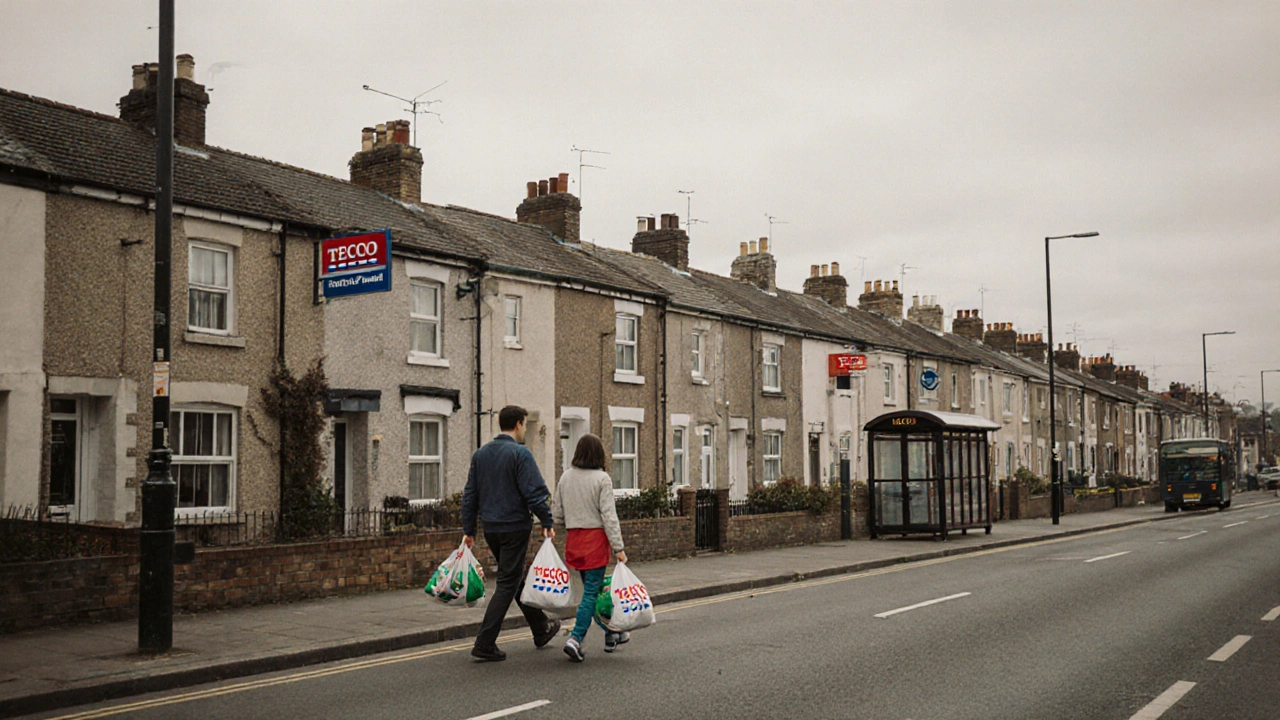UK vs US Affordability: Cost of Living, Wages, and Real-Life Struggles Compared
When people ask whether life is more affordable in the UK, the United Kingdom, a high-income nation with a publicly funded healthcare system and centralized housing policies. Also known as Britain, it's a place where rent eats up nearly half of average wages in London, and many still rely on food banks despite working full-time. or the US, the United States, a large, diverse economy with private healthcare, high income inequality, and no national rent control. Also known as America, it's where a single parent in Texas might earn more than one in Manchester—but still can’t afford a two-bedroom apartment without working two jobs. The answer isn’t simple. It’s not just about paychecks. It’s about what disappears from your bank account the moment you get paid.
Take housing. In the UK, a country where social housing has been cut by over 40% since the 1980s and private rents have doubled in the last decade, a one-bedroom flat in London averages £1,800 a month. In the US, a country where median home prices have surged past $400,000 in cities like Seattle and Austin, and rental vacancies are at historic lows, a similar apartment in New York City costs $3,200. But in Cleveland or Detroit? You can find one for under $900. The US has extreme highs and lows. The UK has fewer extremes—but almost nowhere is truly affordable.
Healthcare makes the difference even starker. In the UK, the National Health Service provides free care at the point of use, funded by taxes, so a broken leg won’t bankrupt you. In the US, even with insurance, a single hospital visit can cost $1,500 or more, and millions delay care because of the price. One study from 2023 found that 40% of Americans skipped medical treatment due to cost. In the UK, that number was 12%—but many wait months for non-emergency care.
Wages tell another story. The UK’s national minimum wage is £11.44 an hour as of 2025. In the US, the federal minimum is $7.25—though 30 states have higher rates. In California, it’s $16. But here’s the catch: in the UK, most workers get 28 days of paid vacation. In the US, there’s no legal requirement. Many get zero. That’s not a perk—it’s a baseline difference in how work is valued.
Food, transport, and bills? Groceries cost about the same, but energy bills in the UK spiked 300% after the 2022 crisis. In the US, natural gas prices fluctuate wildly, but electricity is cheaper on average. Public transport in London is expensive but reliable. In most US cities, you need a car—and car insurance, fuel, and parking add up fast.
What’s clear is this: neither country is easy. The UK has safety nets that keep people from falling through the cracks—but they’re stretched thin. The US offers higher pay in some places—but leaves people exposed to medical ruin, housing chaos, and zero paid time off. If you’re choosing between them, ask yourself: do you value predictability over potential? Or freedom over security?
Below, you’ll find real stories, hard data, and firsthand accounts from people living this reality every day. No theory. No fluff. Just what’s happening on the ground—in London flats, in Texas trailers, in New York apartments, and in the quiet suburbs where people are just trying to get by.
Is it cheaper to live in the US or the UK? Cost of living comparison 2025
Is it cheaper to live in the US or the UK? In 2025, healthcare, childcare, and groceries cost less in the UK. Housing and gas are cheaper in the US. The real difference? Risk. The UK offers stability. The US offers higher pay-with hidden costs.
